Opuntia phaeacantha is confusing complex with many regionally named varieties. They range throughout the the Desert South West. Found growing on sandy to rocky soils from the desert lowlands to the subalpine slopes of the mountains 1,500'-8,000'. They tend to sprawl out as wide low shrubs with long chains of large oval shaped pads in various shades from green through gray/green. The spines vary in length and number. The spines tend to be ridged, with a majority of clones showing amber to near black hues near the base. The flowers are usually large when compared to the O. Polyacantha complex. Their blossoms are displayed from yellow through coral/red. Many of the yellow flowered clones are red at the base of the petals. Fruits are juicy and turn deep maroon through purple when ripe. In general Phaeacantha are hardy to about 0 F.
O. phaeacantha is allied with the complex of plants under the Opuntia engelmannii umbrella. The biggest difference is in growth habit, with the O. engelmannii group tending toward more upright growth as opposed to the lower spreading habit of Phaeacantha.
There are many showy hybrids and selections available that are well worth growing. I keep my plants in bounds by judicious yearly pruning.
http://plants.usda.gov/java/profile?symbol=OPPH
http://swbiodiversity.org/seinet/taxa/index.php?taxon=3384
http://www.efloras.org/florataxon.aspx?flora_id=1&taxon_id=242415204
http://www.efloras.org/florataxon.aspx?flora_id=1&taxon_id=242415194
Here are a few photos of the Phaeacantha I grow.
Comments
Re: Opuntia phaeacantha
And is that Zinnia grandiflora in the last pic?
Re: Opuntia phaeacantha
Mark
This particular plant always has a great fall appearance. The gray/green pads take on the blue tones in the cool weather and in the winter purple highlights radiate from the areoles.
It is indeed hard to determen what the proper name should be. I tend to change the name several times as I whittle my way through the various authors descriptions. There is a lot of gene flow across most species of Opuntia. So for a layman like me it gets a little daunting to commit to a positive ID I just hope I get close.
Rick
Yes it is Zinnia grandiflora. It was planted at the base of the Opuntia and over the years they have become intertwined.
Re: Opuntia phaeacantha
There are many showy hybrids and selections available that are well worth growing. I keep my plants in bounds by judicious yearly pruning.
I agree to that! The problem is getting hold of them here.......
John, pruning these plants must be even worse than pruning barberries :D

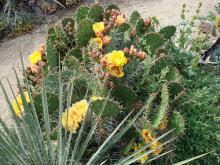
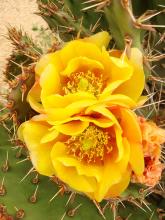


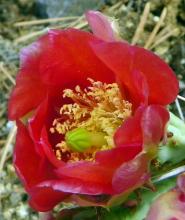
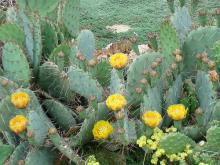
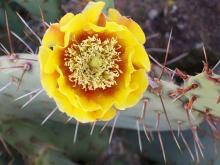
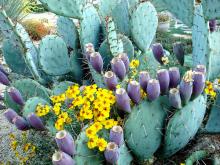
John, these are certainly "eye candy", my favorite is your last photo showing silvery blue pads and purple fruits; wonderful. And just look at the synonymy listed in the USDA link, holy moly the taxonomy on these cacti must be difficult.